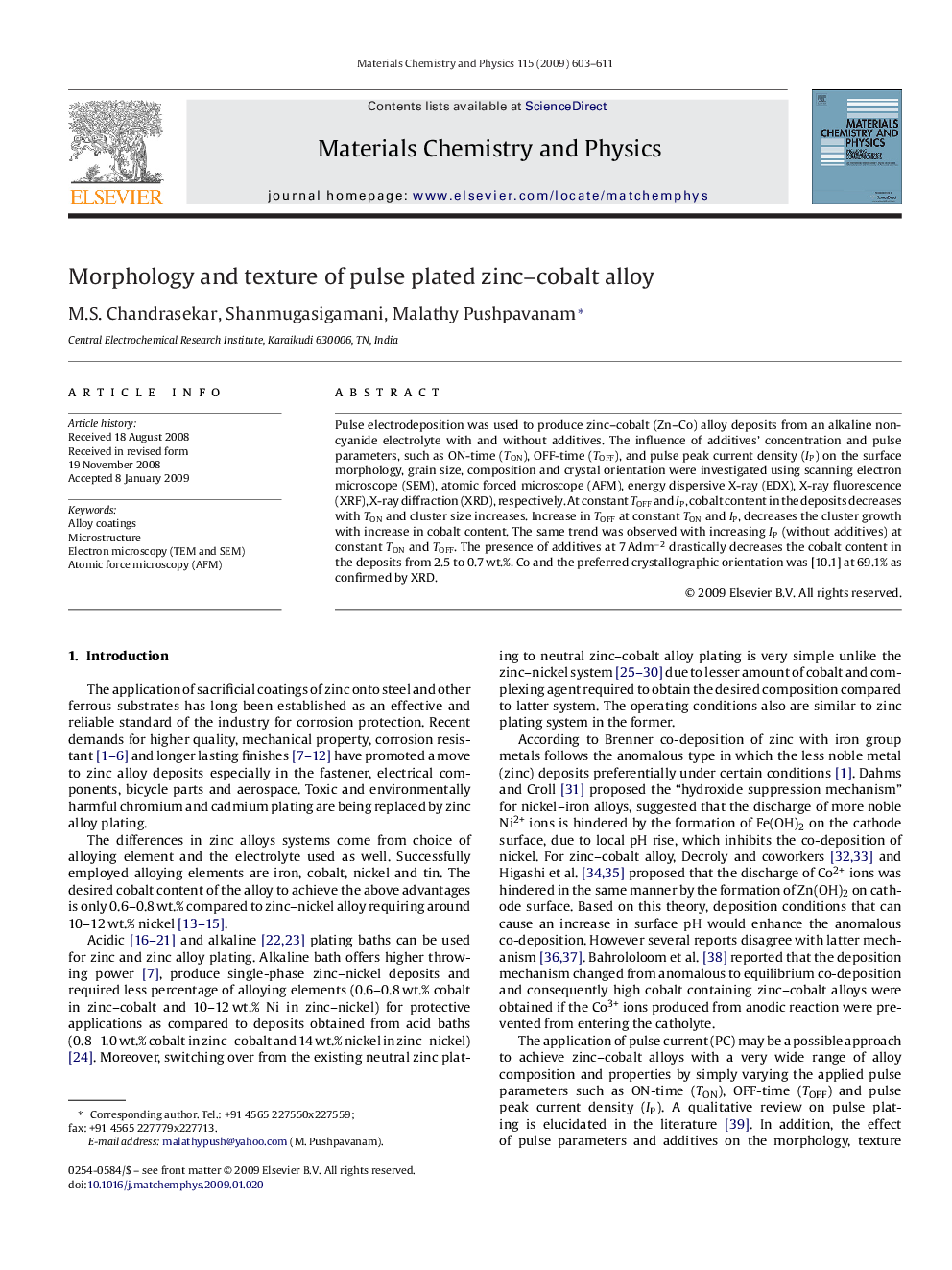| Article ID | Journal | Published Year | Pages | File Type |
|---|---|---|---|---|
| 1525957 | Materials Chemistry and Physics | 2009 | 9 Pages |
Abstract
Pulse electrodeposition was used to produce zinc-cobalt (Zn-Co) alloy deposits from an alkaline non-cyanide electrolyte with and without additives. The influence of additives' concentration and pulse parameters, such as ON-time (TON), OFF-time (TOFF), and pulse peak current density (IP) on the surface morphology, grain size, composition and crystal orientation were investigated using scanning electron microscope (SEM), atomic forced microscope (AFM), energy dispersive X-ray (EDX), X-ray fluorescence (XRF), X-ray diffraction (XRD), respectively. At constant TOFF and IP, cobalt content in the deposits decreases with TON and cluster size increases. Increase in TOFF at constant TON and IP, decreases the cluster growth with increase in cobalt content. The same trend was observed with increasing IP (without additives) at constant TON and TOFF. The presence of additives at 7Â Admâ2 drastically decreases the cobalt content in the deposits from 2.5 to 0.7Â wt.%. Co and the preferred crystallographic orientation was [10.1] at 69.1% as confirmed by XRD.
Related Topics
Physical Sciences and Engineering
Materials Science
Electronic, Optical and Magnetic Materials
Authors
M.S. Chandrasekar, Shanmugasigamani Shanmugasigamani, Malathy Pushpavanam,
